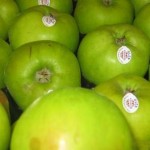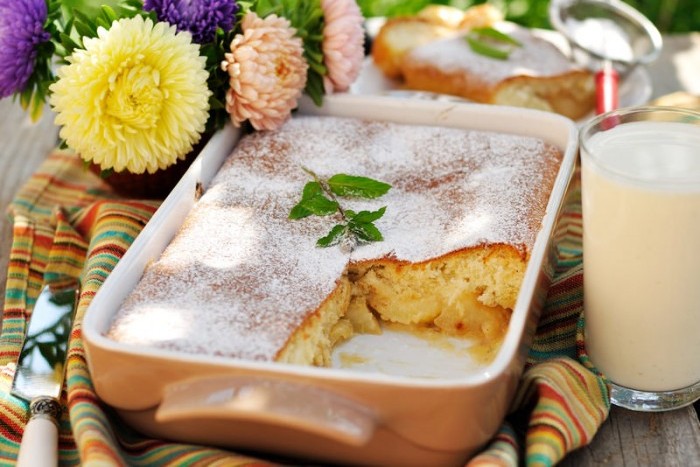UK-grown apples are in season from September to the end of the year. This cake is delicious served warm or cold, on its own or with natural yoghurt.
Keeps well for a few days in an airtight container.
Skills Check
Follow a recipe; follow food safety & hygiene rules; tidy away; cut using bridge/claw technique safely; use a vegetable peeler safely; use measuring cups and spoons; use a jug to measure liquids; use weighing scales; crack an egg; beat an egg; use the all-in-one cake mixing method; scrape out a bowl with a spatula.
Allergens
Gluten | Eggs
(Please note the allergens listed are indicative only. Allergens vary depending on brand; check the labels on the products you use.)
Equipment
Knife, chopping board, peeler, mixing bowl, spatula, wooden spoon, teaspoon, weighing scales, 20x30cm cake tin
Ingredients (makes 24 portions):
- 2 eggs
- 250ml rapeseed oil
- 150g brown sugar
- 275g plain flour
- 2 tsp ground cinnamon
- 1 tsp bicarbonate of soda
- 750g cooking apples
- Lemon juice
Method
- Preheat the oven to 180°C, gas mark 4
- Grease and flour a 20 x 30cm cake tin
- Prepare the cooking apples: wash, peel, core & dice. Sprinkle with lemon juice to stop them from going brown.
- Beat oil and eggs until foamy. Add the sugar, flour, cinnamon, and bicarbonate of soda. Stir in the diced apples.
- Spoon mixture into prepared tin (it will be very thick). Press down and smooth the surface.
- Bake in preheated oven for 30-40 minutes. Cool cake in tin for 10 minutes before removing.
So thinking about Autumn Apple Cake...

Cakes tend to be high in fat and sugar, although some types are worse than others. The Eatwell guide says that if you are consuming foods and drinks high in fat, salt and sugar we should have these less often and in small amounts.
Nutritional Information
| - | Energy | 697kJ/167kcal | 8% |
| High | Fat | 10.0g | 14% |
| Low | Saturates | 0.8g | 4% |
| Med | Sugars | 8.1g | 9% |
| Low | Salt | 0.14g | 2% |
per 55g serving
% of an adult's reference intake
Typical values per 100g: Energy 1268kJ / 304kcal
Notes
A traffic light system is used on nutrition labels to make it easier to see which foods and drinks are lower in calories, fat, sugar and salt. Try and choose more ‘greens’ and ‘ambers’ and fewer ‘reds’, and stick to smaller portions of ‘reds’.
Just because a recipe or a food has a red traffic light doesn't mean you shouldn't eat it. Understanding why a food or recipe might have a red light can be helpful. For example oily fish is high in total fat and so any recipe containing oily fish is likely to be ‘red’ for fat. But it is recommended that we eat oily fish at least once a week because the type of fat it contains is beneficial for our health.
% Reference Intakes are also shown. Reference Intakes are guidelines about the approximate amount of particular nutrients and energy required for a healthy diet (based on an average-sized woman doing an average amount of physical activity). Most children will require less than these Reference Intakes. The contribution of one serving of a food or drink to the Reference Intake for each nutrient is expressed as a percentage.




